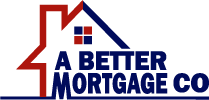Reverse mortgages are an excellent choice for homeowners who are age 62 and older and have an appreciable amount of home equity or own their home. Your retirement years should be spent without financial worry. Reverse mortgages allow the homeowner to hold onto their best-performing asset–their home! And you can do it while still living in your home and remaining the owner.
Seniors can receive cash, a monthly income stream, and/or credit line by tapping into the equity in their home with reverse mortgages. Major financial institutions and the U.S. government back these loans. The loans do not need to repaid until the house is unoccupied and no longer the primary residence. Homeowner is still responsible for their own Property Taxes and Homeowner’s Insurance premiums. A Better Mortgage Company is state licensed (broker license number 44404) and certified to offer reverse mortgages.
To learn more reverse mortgages visit our reverse mortgages frequently asked questions page.
Steps to Getting a Reverse Mortgage
1. Awareness. Homeowners learn about reverse mortgages and have a need for additional money.
2. Education. Homeowner contacts a reverse mortgage lender – A BETTER MORTGAGE COMPANY – to learn more about reverse mortgages. The homeowner then receives a packet of information.
3. Counseling. Homeowner seeks counseling from a local HUD-approved agency or a national counseling agency. Note: Counseling is required for all reverse mortgages and may be conducted by telephone or face-to-face with a HUD approved agency.
4. Application/Disclosure. The homeowner completes a loan application with A BETTER MORTGAGE COMPANY and selects a payment plan–whether fixed monthly payments, lump-sum payment, line of credit, or a combination of these. A BETTER MORTGAGE COMPANY discloses the homeowner the estimated total cost of the loan (required by the Federal Truth and Lending Act). The homeowner provides A BETTER MORTGAGE COMPANY with required information, including a copy of the deed to the home, verification of the social security number, counseling certificate, and information on any existing mortgages.
5. Appraisal. A BETTER MORTAGE COMPANY orders an appraisal, which the homeowner pays for, to place a value on the home. The appraiser makes sure the physical condition of the property meets FHA guidelines. If any structural defects are found, the homeowner must hire a contractor to complete the repairs after the reverse mortgage closes.
6. Underwriting. After receiving all the necessary information, A BETTER MORTGAGE COMPANY finalizes the loan details with the homeowner (such as determining payment option and frequency of loan interest rate adjustments) and submits the loan package for final approval.
7. Closing. If the loan package is approved, the closing date can then be scheduled. At that time the closing papers and final figures are prepared. Closing costs are usually financed as part of the loan. Most of the time a representative from a title company has the homeowner sign loan papers.
8. Disbursement. The loan funds are disbursed four business days after closing. The homeowner accesses the funds based on the form of payment option selected. Any existing debt on the home is paid off. A new lien is placed on the home. The homeowner may use the loan proceeds for any purpose. The loan “servicer” manages the account and is responsible for disbursing monthly payments to the homeowner (if this option is chosen), advancing line of credit funds upon request, collecting any repayments on the line of credit, and sending periodic statements.
9. Repayment. The homeowner does not make any monthly payments during the life of the loan. The loan is repaid when the homeowner ceases to occupy the home as a primary residence. The loan may be repaid by the homeowner or the heirs/estate, with or without a sale of the home. The repayment obligation cannot exceed the value of the home or sales price.

Key Features
- No monthly payments – Requires no Mortgage repayment until you permanently leave your home. Homeowner is still responsible for their own Property Taxes and Homeowner’s Insurance premiums.
- Variety of safeguards in place to protect the borrower – There are a variety of safeguards to protect the borrower. For example, today’s programs have interest rate caps, caps on all fees, and require full disclosure on all fees. They also require that the homeowner attend a free counseling session with an independent counselor approved by HUD. The insured loans protect the homeowner so they will never owe more than their home is worth no matter how long they live in their property. These safeguards ensure that the homeowner always retains the title to their property, mitigates the risk of interest rate increases, and ensures that all fees are understood.
- Proceeds distributed tax free – Proceeds are not considered income, so there are no tax consequences for the borrower (consult with your tax advisor to verify based on your specific situation). These funds will not affect your social security or Medicare benefits. The funds will not be taxed by the IRS.
